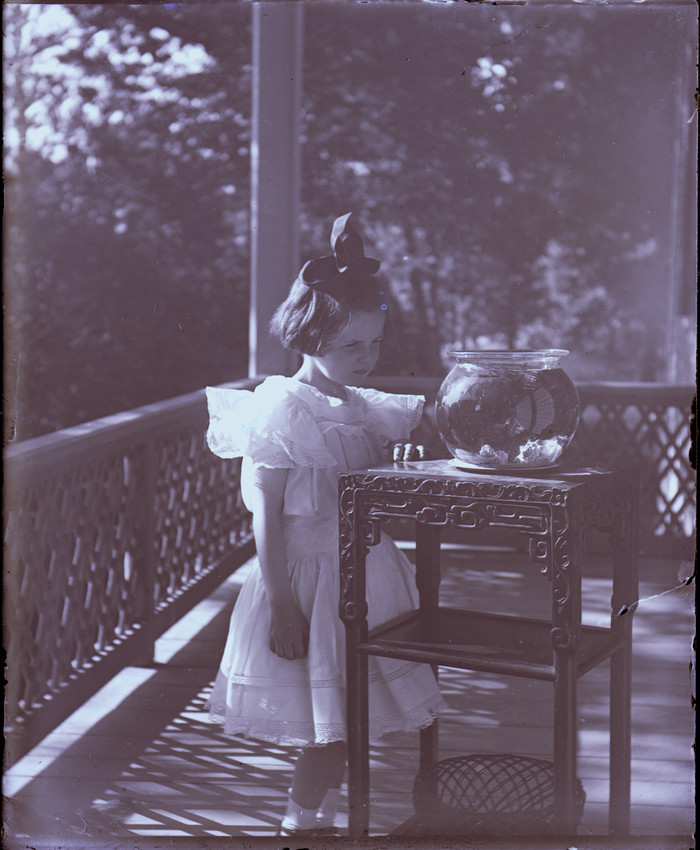Historic New England’s collection services team works with interns to help preserve, catalogue, and digitize our archival and object collections. Below, intern Gracey Hellstrom shares what her work with glass-plate negatives from the Library and Archives tells us about an early female photographer.

Photograph of a girl and fish tank on a porch. From the Alice Augusta Rogerson Brown Photograph Collection.
The Alice Augusta Rogerson Brown photographic collection, which I helped process for Historic New England this summer, features the work of Brown, an amateur female photographer and noted musician who sought to capture New England life in the late nineteenth century. The subjects of her photographs include architecture and landscapes from around Massachusetts and elsewhere in New England, portraits of children and women, and scenes of people and animals on the farm. One of the earliest collections of photography by a female photographer, Brown’s collection comprises more than 300 different images of early New England life through the eyes of a woman.
Most of the items in the collection are glass-plate negatives. The gelatin dry plates are composed of a gelatin binder and glass support, which required less exposure time and did not require on-site development.[1] They also had a longer shelf life, which allowed for the sale of ready-to-use glass plates to the public. Dry glass-plate negatives replaced the labor intensive wet-plate process, and allowed much greater access to amateur photography for middle- to upper-class women like Brown.[2] Historic New England’s photography collection includes works by a number of early female photographers, including Emma L. Coleman, Mary H. Northend, and Eleanor Raymond.
Preserving glass-plate negatives is challenging because they are intrinsically fragile. The most common form of damage is breakage due to poor handing or storage. Flaking of the emulsion layer (the layer that contains the image) is also common over time with gelatin dry-plate negatives. Glass plates come in multiple sizes. Brown’s photographs were all developed on five-by-seven-inch plates, but glass plate negatives may be as large as twenty-two by twenty-five inches. To prolong the life of the images, and make them more accessible to the public, I scanned the negatives, added descriptive information (metadata), and added them to Historic New England’s digital asset management system for long-term preservation.
[1] “Care and handling of photographs.” Northeast Document Conservation Center, https://www.nedcc.org/preservation101/session-5/5-glass-supports.
[2] Condon, Lorna. “A woman’s pastime.” Historic New England, Winter 2003/Spring 2004.